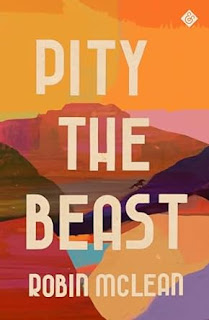
The entry begins:
I tend not to read other writers’ books while I’m working on my own. Fortunately, I finished my next book about six weeks ago and sent it off to my publisher. I’ve been binging ever since. Two books stand out.About Man in the Water, from the publisher:
The first is Small Mercies by Dennis Lehane. I’ve always maintained that the best crime novels are always about more than the crime and whodunit; are always about more than who killed Mr. Body in the library with a candlestick (It was Miss Scarlet, by the way. It’s always Miss Scarlet). This book deals with race hatred, family, the criminality of power, personal salvation and so much more. It is thought-provoking as well as ...[read on]
When his wife finds the body of an Army veteran in the lake, it is inevitable that former cop, now unofficial P.I. Rushmore McKenzie will get enmeshed in a complicated case of possible murder.Learn more about the book and author at David Housewright's website and Facebook page.
It all starts with the body in the water—on what should be the first boat day of the season, McKenzie’s wife Nina finds a dead Army vet. As the dock owner and theinsurance companies claim that it was suicide, despite the deceased, E.J. Woods, having no obvious reason to kill himself, his widow starts acting suspiciously. McKenzie finds himself pulled into the fight when Naveah, the victim’s daughter, convinced her father was murdered, asks him to investigate.
Further complicating the situation are uncooperative boaters, allegations of PTSD, and the simple fact that there was no reason for E.J. to be in the water. McKenzie’s investigation unearths not only the petty squabbles surrounding the lake and its dock, but details of her father’s past that Naveah is perhaps better off not knowing. With Nina haunted by dreams of the body and the legal fight over cause of death becoming increasingly nasty, McKenzie may be the only one interested in finding justice for E.J.— and uncovering the truth before another person dies.
My Book, The Movie: The Last Kind Word.
The Page 69 Test: The Last Kind Word.
The Page 69 Test: Stealing the Countess.
The Page 69 Test: What the Dead Leave Behind.
The Page 69 Test: First, Kill the Lawyers.
Writers Read: David Housewright (January 2019).
The Page 69 Test: In a Hard Wind.
Q&A with David Housewright.
Writers Read: David Housewright.
--Marshal Zeringue



























.jpg)
















